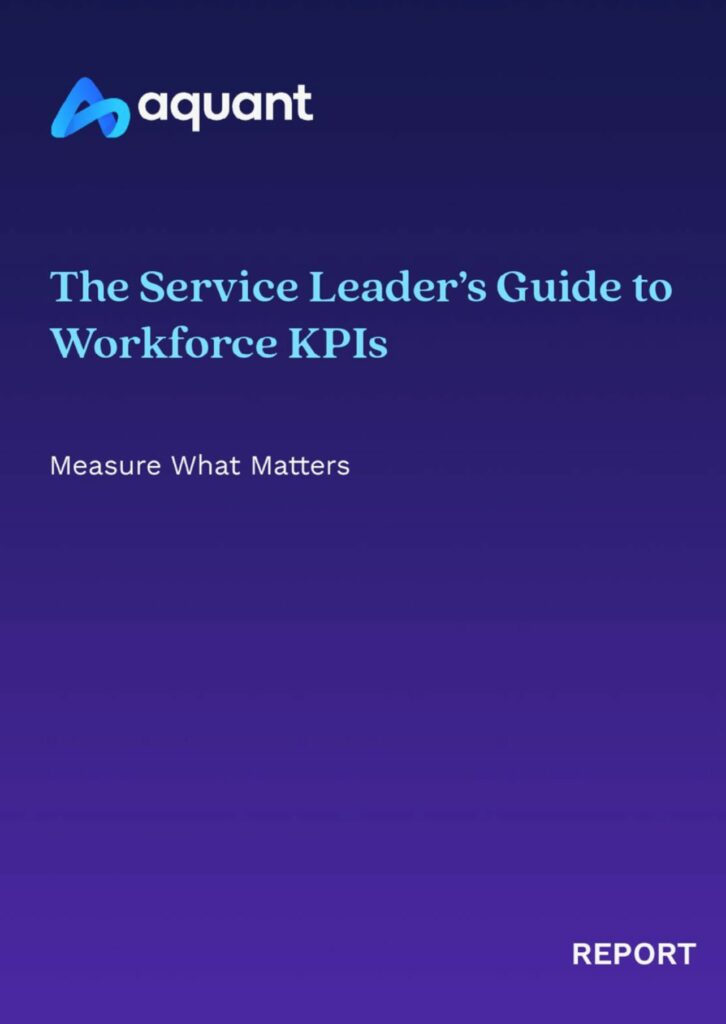Why Workforce Measurement (Really) Matters Now
You can’t manage what you don’t measure. It is an oft-repeated phrase amongst management professionals of all sectors. As we establish the way out of the toughest crisis our industry has ever seen, good management is crucial and that means the metrics we measure are more vital than ever.
The service landscape is facing a dramatic transformation that ranges from the need to skill up a new workforce, to the move away from a reactive break-fix work towards a predictive service model. This, coupled with the desire to limit expensive on-site visits and customer demands for enhanced SLAs, means every service moment matters.
To make this transformation a reality requires a workforce of high performers, but there are plenty of hurdles on the path to achieving this goal.
Assembling and nurturing a powerhouse service team is challenging
- Baby Boomers are in the midst of a powerful retirement wave
- There is a sizable skills gap between new recruits and those who are retiring
- High-paying service jobs became less desirable over the last decade as enrolment in vocational schools declined in favor of university programs
- Millennials and Gen Z seek to work, collaborate, and develop professional skills using speedy tech tools versus long-term learning plans
And the service landscape looks different, too
- Machines are more complex and require a workforce with advanced technical skills
- Consumer demand for standardized service costs are driving more predictive service offerings
- A move towards remote diagnostics and self-service triage offerings empower the customer to handle simple issues that don’t require a technician to be dispatched
- Changing economic factors are driving renewed pressure to stabilize or cut service costs
When we peel away the layers, all of this reinforces that a high-performing workforce is a key competitive differentiator. But how do service leaders move forward in this new service landscape?
Tools that map out your workforce, provide a snapshot of your experts versus challengers and provide guidance on how to upskill the whole team are the first step.
Why Measure Individual Workforce Performance?
Service companies need to zoom in and out when it comes to KPIs Organizations have dashboards and charts to measure the service KPIs of the entire team, but few are zooming in to look at individual performance. Big picture knowledge is essential, but without visibility into great performers (service heroes) versus those who would benefit from training or upskilling (challengers) it’s hard to create service plans that address the root cause of workforce issues.
You likely know the shortlist of service heroes.
They are saved to your favorite contacts. And you may have a training plan for a few of the team members you know are struggling. What about the other 98% of the team? How are they really performing, and what do they need to do to level up and develop the skills and confidence of your superstars?
There are some obvious signs that members of your service workforce could use additional training. For example, those who regularly require repeat visits to remedy less complex issues is an obvious sign. What about more subtle indicators?
Some on the team may appear to check all the right boxes but may be struggling in other ways, such as racking up high parts costs by swapping out parts until the job is fixed.
This is where workforce measurement helps make sense of employee data by analyzing KPIs in a way that really matters. It can spot inconsistencies in service quality among the team and help you pinpoint who needs training and who is in the best position to provide mentoring.
But, there’s a caveat! Before you can get here, you need to measure the right things the right way.
Do the KPIs You Measure Provide the Right Insights?
We see you shaking your head. Service organizations already spend quite a bit of time and effort tracking workforce KPIs, and most service leaders keep a constant eye on those numbers.
But right now those KPIs tend to be narrowly focused on single measurements such as productivity or first-time fix, and they don’t provide a holistic snapshot.
Without zooming out for a 360-degree view, measuring in isolation often leads to systemic and costly service issues. Instead of focusing solely on “what” to measure, it’s more important to ask “how” you are measuring. Do you have access to the right mix of information to measure what really matters? That should include understanding metrics at a macro level across the organization and on an individual level. Take a deep dive into your data.
Does one KPI improve, only to have another fall below target? Not analyzing the right data, or not doing so in the right way, can be just as harmful as not measuring at all.
In the next feature in this series, we will look at the five key KPIs that, when understood in relation to each other, can provide an accurate snapshot of what’s really going on with your service teams.
This white paper is currently available exclusively to all FSN PRO members. Subscribe today to have instant access our industry-leading library with over 130 resources, 70+ hours of in-depth conversation and our FSN Education Masterclass courses.

![]() Data usage note: By accessing this content you consent to the contact details submitted when you registered as a subscriber to fieldservicenews.com to be shared with the listed sponsor of this premium content Aquant who may contact you for legitimate business reasons to discuss the content of this white paper.
Data usage note: By accessing this content you consent to the contact details submitted when you registered as a subscriber to fieldservicenews.com to be shared with the listed sponsor of this premium content Aquant who may contact you for legitimate business reasons to discuss the content of this white paper.


